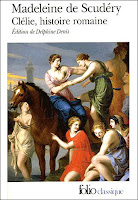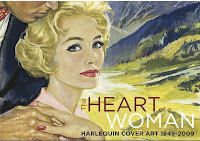 The Riskies welcome back Elizabeth Rolls whose next Harlequin Historical, Lord Braybrook’s Penniless Bride, will be in bookstores in June. Elizabeth comes to us all the way from Down Under!
The Riskies welcome back Elizabeth Rolls whose next Harlequin Historical, Lord Braybrook’s Penniless Bride, will be in bookstores in June. Elizabeth comes to us all the way from Down Under!
Elizabeth will give away one copy of the book to one lucky commenter chosen at random.
 Elizabeth, tell us about Lord Braybrook’s Penniless Bride.
Elizabeth, tell us about Lord Braybrook’s Penniless Bride.
Hi everyone! Thanks for having me to visit again. You want to hear ALL about Braybrook and Christy? LOL! Just a little bit maybe. This is the story of a man who has a mental list, enumerated by his stepmother in front of the heroine, of the attributes he requires in a bride . . . and how he ends up having to marry Christy Daventry who embodies none of said attributes. Christy is a woman with only one thing to depend on – herself. She is capable, intelligent and more than aware that a man like Braybrook can only want one thing from a woman like her. She is also aware of her own deepest vulnerability- her loneliness.
How does Lord Braybrook’s Penniless Bride fit in with your previous books?
Braybrook was really an accidental character. He first appeared in His Lady Mistress and originally I intended him to be a bit of a rat bastard, in Anne Stuart’s immortal phrase. But he refused to behave badly and turned out to be rather nice. Still, he only had one scene, and a very minor part at that. Then I started writing A Compromised Lady and there he was again. This time muscling his way in on the action right from the start. I was starting to find out a little bit more about him and before I knew where I was, parts of his story were coming to me, so I wrote them down before I could forget them. The early parts of Lord Braybrook’s Penniless Bride were written at much the same time as parts of ACL. It turned out though, that the characters from the earlier books didn’t show up at all in this story. That surprised me, but the story just didn’t work out that way.
Did you come across any interesting research while you were writing the book?
I did quite a bit of reading up on illegitimacy. The situation for illegitimate children was really horrible. A child born out of wedlock had no legal rights of inheritance AT ALL. They were considered Filius Nullius – child of no one. There was absolutely nothing in the legal system to protect such children or force the father to take responsibility. Of course in those days there was no way to prove beyond all possible doubt that the father was the father. Children born into this situation were considered literally tainted. Julian’s actions are, I have to admit, historically fairly unlikely both in regard to Christy and Nan Roberts. What can I say? The man’s a hero. I had a weird experience with the last part of the book in terms of research. I really didn’t know how to end the story, and tie everything up so that Julian’s altered attitudes were believable. Not for the reader, but for Christy. Most of it was in place, but I needed some sort of context for him to make that final declaration. Not to force it, but to give it form. In the end I found a couple of books on antique toys and nursery furniture – talk about a blinding revelation! The moment I had those books in my hands I had my final scene. (Literally. I’d barely opened them except to check they covered the right period.) It’s completely sappy and sentimental, the rocking horse owes more than a passing swish of the tail to the Skin Horse in The Velveteen Rabbit, but I love it!
What is risky about Lord Braybrook’s Penniless Bride?
Risky?? Hmm. The risky part is that Christy is not your average well-bred heroine. That in itself is perhaps not risky, but Braybrook’s initial attitude towards her is typical of his time and rank, and is, as she later points out to him, deeply hypocritical. He is attracted to her, but because she is so far beneath him in the social scale he views her purely as mistress material. However, he is forced by circumstance and Christy’s nature to change his mind. I don’t want to give too much away in terms of spoilers, but he is also very much of his time in his attitude towards illegitimacy and some may find his initial views on this somewhat confronting. Possibly also those who don’t like children in a romance may find Braybrook’s youngest siblings annoying, so be warned if you are in that category. The man has a family and his story turned out to be very much about the importance of family and just what family involves. Braybrook’s conflict is that he is torn between what received social wisdom tells him he should feel about Christy, and what his heart is telling him.
What’s next for you?
I’m battling on with the next book. This one is a bit of a departure for me – a murder mystery. Don’t get too excited just yet. Murder is easy, but the plotting of the whole thing is giving me hell. I mean figuring out what happens is fine – the tricky bit is trying to make sure it isn’t obvious for the reader! Right now I’m hung up on the significance of a snuff box . . . This one is Regency set, but after that I have an idea for a Restoration story. So I’m reading about the English Civil War and the Restoration, and the 17th century generally. Lots of reading on both sides, Parliament and Royalist. I’m finding the differences and conflicts in religious thought fascinating, which may give the story a very different flavour to what I’ve written in the past. It’s hard to say at the moment. So far I have a premise and two characters and a couple of rough, VERY rough – did I say ROUGH? – scenes. It feels good though, but no doubt by the time I’m fully into the writing it will drive me mad! It’s nice to be doing something a little different though. I love Regency and will definitely come back to it, but this story doesn’t fit into a Regency setting and I really, really want to write it. I guess though I won’t be able to come back here and tell you all about that one – unless you want to make the blog Risky Regencies AND Restoration Drama for a day!

 Elizabeth’s A Compromised Lady is a finalist for Australia’s Romance Novel of the Year!!
Elizabeth’s A Compromised Lady is a finalist for Australia’s Romance Novel of the Year!!
AND His Lady Mistress is still available as one of Harlequin’s 60th Anniversary Free Downloads.
Don’t you have a question you are dying to ask Elizabeth? Ask a question or leave a comment for a chance to win Lord Braybrook’s Penniless Bride
 I’m currently off having fun in New York with Diane and Megan! Next week I hope to have some pics and an account of our time here (BEA, museums, theaters, Lady Jane’s Salon, oh my!). But I’ve left this post about a most Risky lady of history, the author and salon hostess Madeleine de Scudery (who died on this day in 1701).
I’m currently off having fun in New York with Diane and Megan! Next week I hope to have some pics and an account of our time here (BEA, museums, theaters, Lady Jane’s Salon, oh my!). But I’ve left this post about a most Risky lady of history, the author and salon hostess Madeleine de Scudery (who died on this day in 1701). She wrote many immensely long volumes, both under her own name and the pseudonym pf “Sapho,” including Artamene (10 volumes, 2.1 millions words, 1648-53), Ibrahim (4 volumes, 1641), and Almahide (8 volumes, 1661-3). They are set in the classical world or an imaginary Orient, but their language and plots reflect the life of 17th century Paris, full of philosophical conversations and many abductions of heroines. The characters were often based on Madeleine’s own friends and acquaintances, such as her lover Paul Pellison.
She wrote many immensely long volumes, both under her own name and the pseudonym pf “Sapho,” including Artamene (10 volumes, 2.1 millions words, 1648-53), Ibrahim (4 volumes, 1641), and Almahide (8 volumes, 1661-3). They are set in the classical world or an imaginary Orient, but their language and plots reflect the life of 17th century Paris, full of philosophical conversations and many abductions of heroines. The characters were often based on Madeleine’s own friends and acquaintances, such as her lover Paul Pellison.










